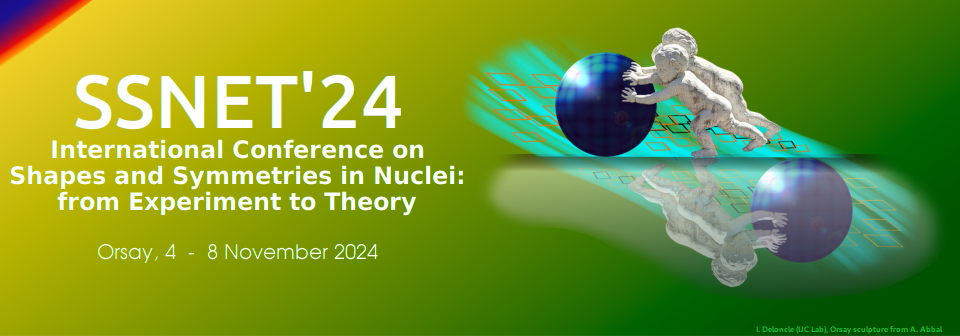Présidents de session
Session 6: Coulomb excitation
- Paul Garrett (University of Guelph, Canada)
Coulomb excitation experiments enable measurements of both electric quadrupole transition strengths between nuclear states as well as static E2 moments of the excited states. As such, these experiments provide direct and sensitive probes of quadrupole collectivity and correlations in nuclei, which enables stringent tests of nuclear theory. An overview of the Coulomb excitation experimental...
Nuclear collectivity has been thought to emerge through spherical quadrupole vibrations, especially in transitional regions between shell closures and deformed nuclei. The Cd isotopes ($Z=48$) were long considered textbook examples of vibrational nuclei. However, in recent years this narrative has been challenged, with elecromagnetic matrix element data showing major discrepancies with the...
The study of shapes and collective properties of atomic nuclei is a vast area of research, and low-energy Coulomb-excitation is one of the most powerful experimental techniques for such studies. It provides information not only about the reduced transition probabilities, describing the collectivity of the transitions, but also about the spectroscopic quadrupole moments of excited states, as...
We studied cross-section distributions measured as a function of scattering angle for multiple excited states in $^{106}$Cd, populated via inelastic scattering on a $^{92}$Mo target. The balance between Coulomb and nuclear interaction in the population of individual states was explored by comparing the experimental $\gamma$-ray yields with the predictions obtained with the GOSIA...
Nuclear Excitation by Electron Capture (NEEC) was predicted by Goldanskii and Namiot as the the inverse process of internal conversion in 1976$^{[1]}$. It was predicted to play an important role in the isomer depletion, which is a potential path for releasing nuclei energy stored in isomer$^{[2]}$.
The first experimental observation on NEEC was reported in the slowing down process of...

